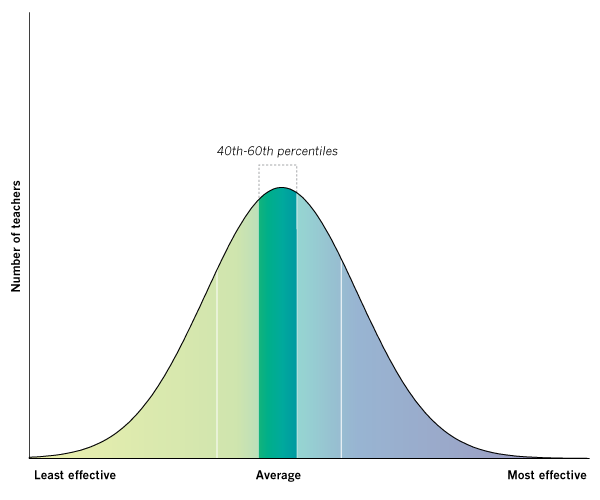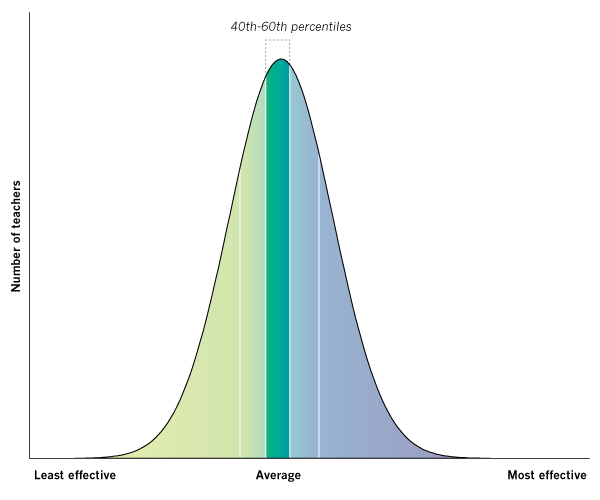Bernard Roderic Spilman
A 4th grade teacher at Aurora Elementary in 2009
These graphs show a teacher's "value-added" rating based on his or her students' progress on the California Standards Tests in math and English. The Times’ analysis used all valid student scores available for this teacher from the 2002-03 through 2008-09 academic years. The value-added scores reflect a teacher's effectiveness at raising standardized test scores and, as such, capture only one aspect of a teacher's work.
Compared with other Los Angeles Unified teachers on the value-added measure of test score improvement, Spilman ranked:
- Average overall.
- Average in math. Students of teachers in this category, on average, did not gain or lose significantly on the California Standards Test compared with other students at their grade level.
- Average in English. Students of teachers in this category, on average, did not gain or lose significantly on the California Standards Test compared with other students at their grade level.
Spilman's LAUSD teaching history
2002-03 through 2008-09 academic years
- Aurora Elementary, 2009 - 2007
- Harmony Elementary, 2006 - 2005
Bernard Spilman's Response:

The Los Angeles Times used a flawed evaluation system to rate teachers. On the surface, it seems reasonable to use test scores to track a teacher’s performance. It is, after all, the same test that teachers administer throughout the district. Yet, test scores do not take into account many variables that affect student and teacher performance. I know a number of teachers that have had a tremendous positive impact on their students’ education and have been rated as average. There are also quasi-illiterate teachers that have been rated as most effective value-added. I will only recount my experiences here, as I was stamped with an average that has taken some of the passion out my teaching.
The same day that I was branded as average by the LA Times, I received my students’ test scores from the previous year. It was earlier in the day. I was so elated that tears came to my eyes. As background, you should know that these students were the ones that other teachers and the principal had basically written off. They were all English Learners. They had the lowest scores of their grade level. There were no proficient students, and most were Below Basic or Far Below Basic. I told my principal to give them to me. I knew I could help them, both as test takers and as lifelong learners. And I did. I began with twelve Below Basic students in Language Arts and ended with four Below Basics. I had five Below Basics in Math and ended with only one. Some students that I had looped with had started off with test scores of Far Below Basic. The first year they were with me, they moved up to Below Basic. This past year, they moved to Basic. Are these kids on standard? No. Have they worked tremendously and moved up significantly? Yes! To me, the Los Angeles Times has denigrated all the effort and progress that my students have made.
Another reason that using only standardized testing as a measure of teacher performance is flawed is that it takes no account of personal circumstances. Four years ago, I had cancer. I was diagnosed with cancer at the beginning of the year. After a series of tests, around mid-year, I had to take a leave of absence because of the chemotherapy and, later, because of surgery. I obviously also had a lengthy recovery. My students that year had four different “long term” substitutes. They had no stability and they did not receive the attention that my students usually get. Their test scores were bad. How deplorable that the LA Times would penalize a teacher for having cancer!
The standardized tests do not take into account the real achievements that students have made. My student M started off in my class reading an alarming four words per minute in third grade. Now, in fifth grade, she reads at around seventy words a minute. She is still below standard, but it was an incredible achievement for her. More importantly, this student now believes that she can be successful. My student J would cry when he had to write essays. By the end of the year, he begged to stay in during recess and lunch to keep writing. I received a long letter from one of my parents thanking me because, for the first time, her son was sure that his teacher cared about him and was willing to fight for him. My student L used to cry almost every day in her previous class. It took me half a year, but, after that, she began smiling, and, more incredibly, talking and participating. Students are not production units. Sure, I could do nothing but Language Arts and Math all year, take on a class with a lot of successful students, and be “more effective.” But, I did not go into teaching to just punch a clock. Nor did I decide to teach because I wanted an easy pat on the back. I have never expected olive wreaths from anyone, but I do demand balanced reporting from the LA Times.
![]() The Times gave LAUSD elementary school teachers rated in this database the opportunity to preview their value-added evaluations and publicly respond. Some issues raised by teachers may be addressed in the FAQ. Teachers who have not commented may do so by contacting The Times.
The Times gave LAUSD elementary school teachers rated in this database the opportunity to preview their value-added evaluations and publicly respond. Some issues raised by teachers may be addressed in the FAQ. Teachers who have not commented may do so by contacting The Times.
|
|
 Delicious
Delicious
|
 Digg
Digg
|
 Facebook
Facebook
|
 Twitter
Twitter
|









